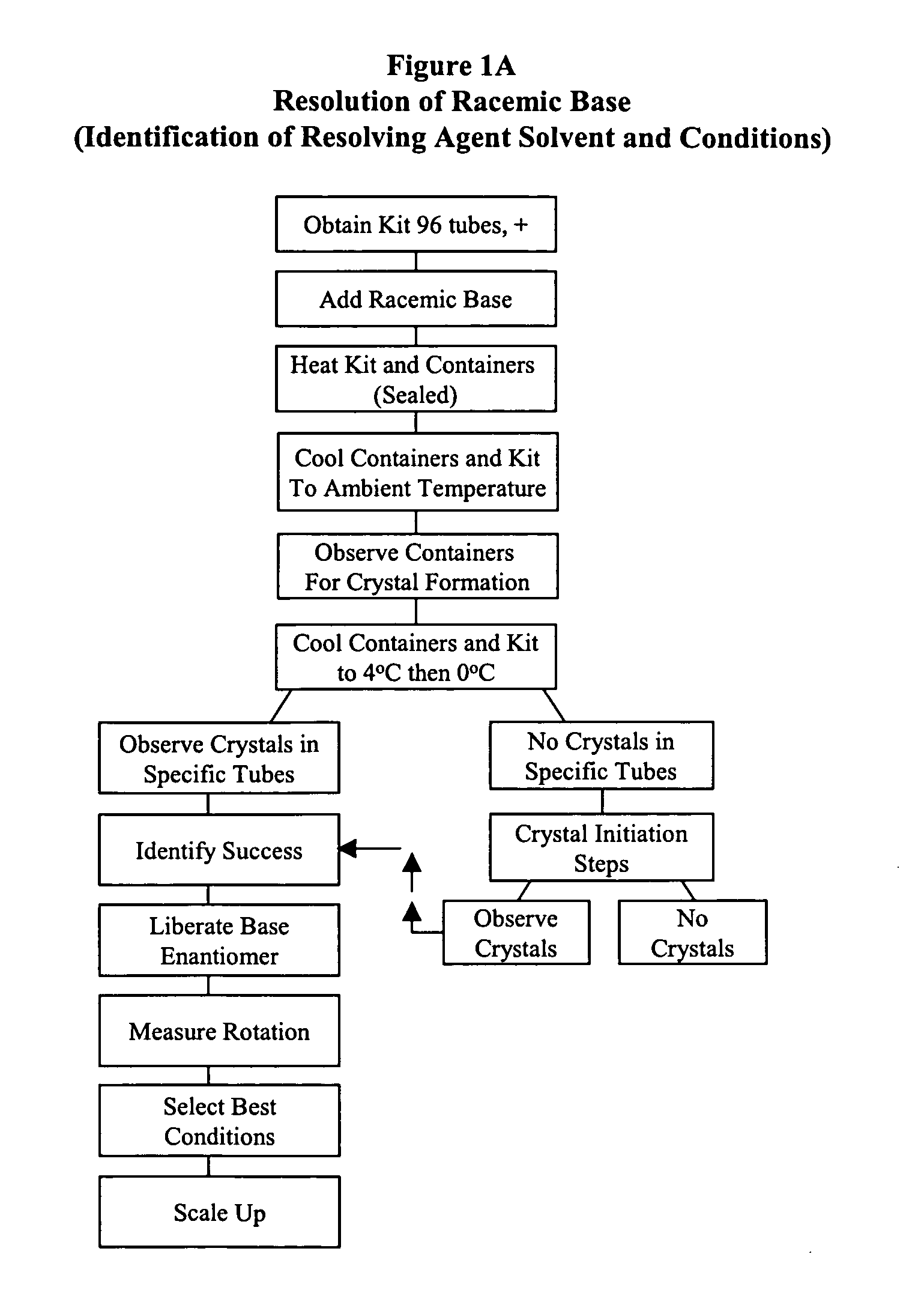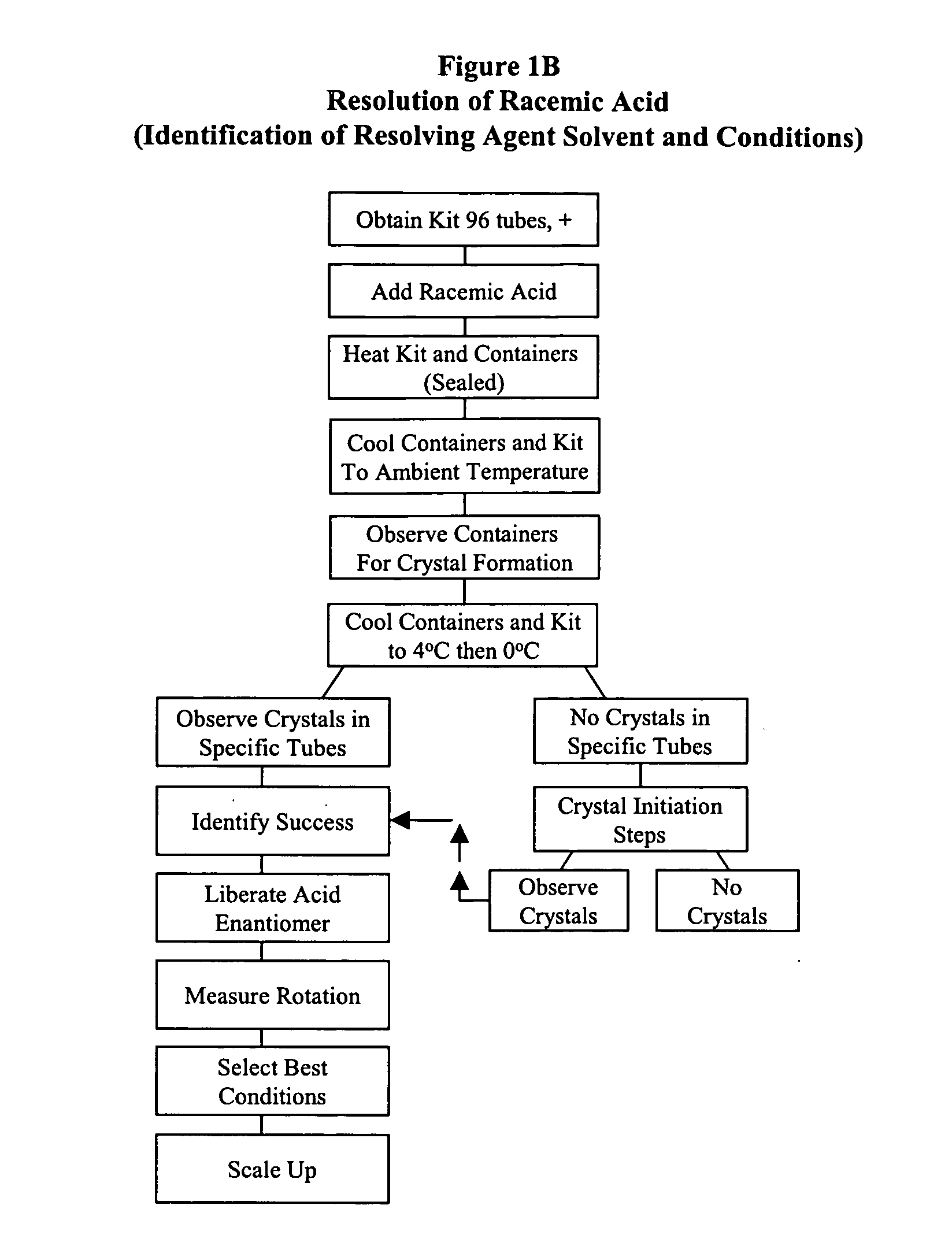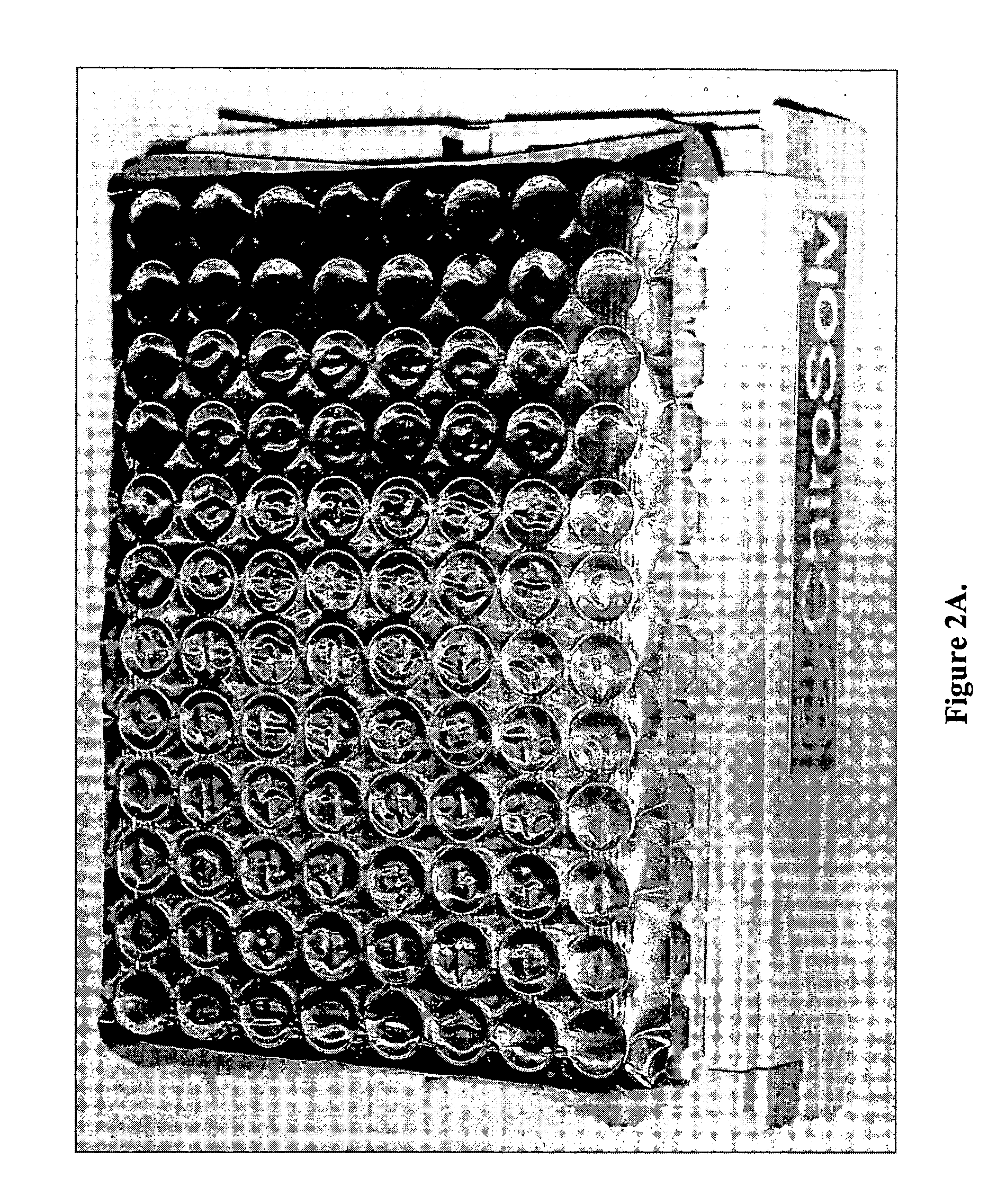Kit for automated resolving agent selection and method thereof
a technology of automatic resolving and trays, which is applied in the field of improved trays, can solve the problems of insufficient resolving of mixtures of racematic compounds, insufficient resolving of racematic compounds, and insufficient resolving of in vitro fetuses,
- Summary
- Abstract
- Description
- Claims
- Application Information
AI Technical Summary
Benefits of technology
Problems solved by technology
Method used
Image
Examples
example 1
Resolution of Racemic Acid Using ChiroSolv® Kit
This procedure corresponds in general to FIG. 1B
[0174] 1. Use kits B1, B2, B3 or combination thereof (preferably all of them for best results). [0175] 2. Remove the lid of the kit(s). [0176] 3. Determine if the unknown racemate acid is solid / powder. [0177] a) If yes, remove the seal of the kit and dispense about 0.01 to 0.03 mmol of unknown racemate into each container of the kit. Cover the containers with additional seal / rubber septa provided. Go to step 4. [0178] b) If no, dispense about 0.01 to 0.03 mmol of the liquid racemate into each container. [0179] 4. Heat the kit and containers and the mixture to 80° C., or until the mixture becomes homogeneous (up to 100° C.). [0180] 5. Optionally agitate the kit to encourage homogenization. [0181] 6. Cool the kit with containers and mixtures to ambient temperature. [0182] 7. Determine if any crystals formed. [0183] a) If yes, select the containers with crystals, close them with additional ...
example 2
Resolution of Racemic Bases Using ChiroSolv® Kit
This Procedure Corresponds in General to FIG. 1A
[0194] 1. Use kits A1, A2, A3 or combination thereof (preferably all of them for best results). [0195] 2. Remove the lid of the kit(s). [0196] 3. Determine if the unknown racemate base is solid / powder. [0197] a) If yes, remove the seal of the kit and dispense about 0.01 to 0.03 mmol of unknown racemate into each container of the kit. Cover the containers with additional seal / rubber septa provided. Go to step 4. [0198] b) If no, dispense about 0.01 to 0.03 mmol of the liquid racemate into each container. [0199] 4. Heat the kit and containers and the mixture to 80° C., or until the mixture becomes homogeneous (up to 100° C.). [0200] 5. Optionally agitate the kit to encourage homogenization. [0201] 6. Cool the kit with containers and mixtures to ambient temperature. [0202] 7. Determine if any crystals formed. [0203] a) If yes, select the containers with crystals, close them with additional...
PUM
| Property | Measurement | Unit |
|---|---|---|
| Temperature | aaaaa | aaaaa |
| Temperature | aaaaa | aaaaa |
| Temperature | aaaaa | aaaaa |
Abstract
Description
Claims
Application Information
 Login to View More
Login to View More - R&D
- Intellectual Property
- Life Sciences
- Materials
- Tech Scout
- Unparalleled Data Quality
- Higher Quality Content
- 60% Fewer Hallucinations
Browse by: Latest US Patents, China's latest patents, Technical Efficacy Thesaurus, Application Domain, Technology Topic, Popular Technical Reports.
© 2025 PatSnap. All rights reserved.Legal|Privacy policy|Modern Slavery Act Transparency Statement|Sitemap|About US| Contact US: help@patsnap.com



